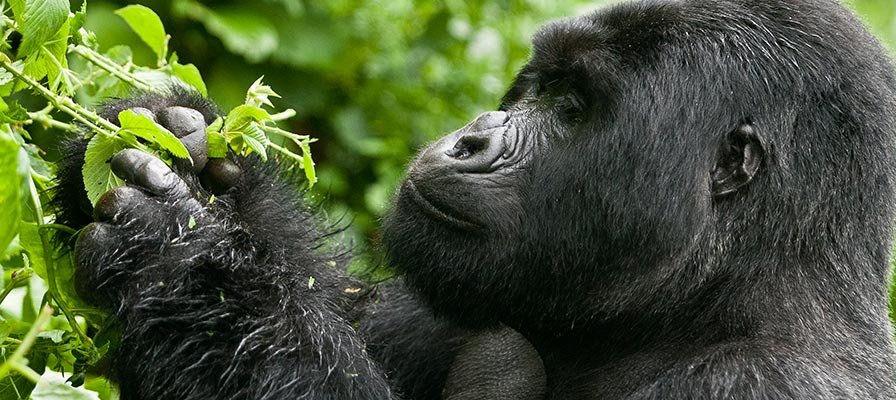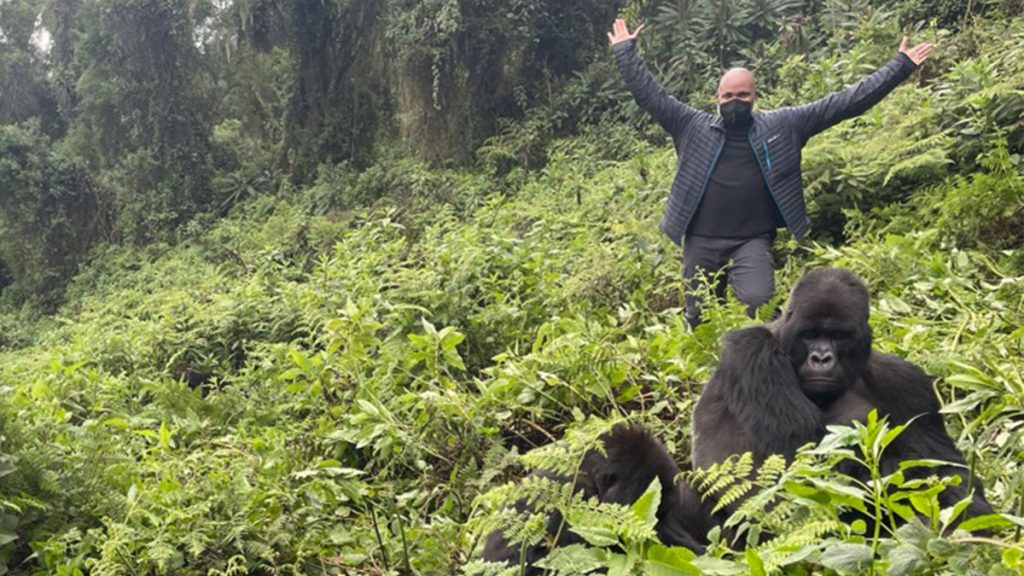The Uganda Gorilla Safari is a safari that allows visitors to see mountain gorillas up close and in their natural habitat. A gorilla safari in Uganda can be either a gorilla habituation safari or a gorilla trekking safari. Gorilla habituation participants are placed in groups of four and are permitted to spend four hours with the gorillas after meeting them, whereas gorilla trekking participants are grouped in groups of eight and are allowed to spend one hour with gorillas after seeing them.
In terms of wildlife, a gorilla safari in Uganda is the centerpiece of the country’s tourism industry. More than 13 different primate species may be found in Uganda, which is referred to as the “pearl of Africa.” Bwindi Impenetrable National Park and Mgahinga National Park are home to about half of the world’s mountain gorilla population. Without seeing these far-off gentle apes, a safari to Uganda is said to be insufficient. The two remote national parks in the southwest of Uganda are where the gorilla tracking takes place. There are presently 1004 mountain gorillas in the world, according to the gorilla census from the previous year.
There are 15 fully habituated gorilla families in Uganda that can be visited for tourism, with 2 being reserved for gorilla habituation and study. A total of 104 gorilla trekking permits and 8 gorilla habituation permits are sold each day. The Nyakezi family, which contains more than 80 gorillas, is the largest gorilla family in Uganda. In the national parks of Bwindi National Park and Mgahinga, there are up to 400 gorillas in total, including members of the 15 habituated gorilla families and others. There are 5 sectors where the gorilla trekking takes place, including 4 in Bwindi and 1 in Mgahinga National Park. The Ntebeko sector is the one in Mgahinga, while the four sectors in Bwindi’s impenetrable forest are Rushaga, Nkuringo, Buhoma, and Ruhija.
Anyone who wishes to go on a gorilla safari in Uganda must first obtain a gorilla permit. If traveling during peak season, 2 to 3 months in advance is required; if traveling during off-peak season, one month in advance is required. The cost of a gorilla permit in Uganda is currently 600 USD per person, but starting in July 2020, it will rise to 700 USD per person. There are various requirements that must be met in order to trek with gorillas in Uganda, such as: A valid passport, at least 15 years old, and other requirements are required. When already in Uganda, one may visit the offices of the Uganda Wildlife Authority in Kampala or apply for the gorilla tracking permit there. Alternatively, one may use reputable tour operators who offer complete Uganda gorilla safari packages that include the gorilla permit.
With over 12 primates in Kibale Forest National Park, over 3 primates in Bwindi Impenetrable Forest National Park, which shares its forest with chimpanzees, and over 2 primates in Mgahinga National Park, Uganda is the only country in the world where one park is home to more than two primates. More than one primate will be present during your Uganda gorilla safari, thereby slaying two birds with one stone.
When to go on a gorilla safari in Uganda

One of the main inquiries visitors have when preparing for a trip to a particular location is this one. One’s chances of gaining experience and realizing their dreams are greatly increased by good timing. Birders prefer it during the rainy season when the birds are nesting, but other wildlife safaris, such as those for the big five animals, can be completed with proper weather timing. In contrast to the examples above, a gorilla safari in Uganda is exceptional in that it is possible to travel at any time of year. Because of the rain forests and the apes’ high altitude, deep-forest location, the weather is almost constant all year long. In contrast to the dry season when they must travel greater distances to obtain food and water, gorillas are considerably simpler to spot during the rainy season when food is plentiful.
The greatest time to go on a gorilla safari in Uganda is during the dry season with little chance of rain. The climb is not difficult because it is not particularly slick. In contrast to the rainy season, when gorillas occasionally nest up on trees and also come down late, the gorillas also venture out early and retire late since they like traveling around the jungle. December through early March and again from June through October are the ideal months. Uganda experiences two rainy seasons: one in the first quarter of the year, from March to May, and another with brief, light rainfall in November.
What if I fail to see gorillas what happens?
When passengers see the prices for the gorilla permit, this is one of the most frequent thoughts they have. Although the costs seem high, gorilla trekking is not even worth the experience. Since gorillas are more vulnerable than even humans, the costs associated with protecting and conserving them are extremely high.
The highlight of your gorilla safari in Uganda is gorilla trekking, where you have a 99% chance of sighting gorillas. In reality, there haven’t been any examples of visitors who came to view the gorillas with us going missing. However, nature is nature. The Uganda Wildlife Authority has made it plain that if a group does not encounter gorillas during the time allotted for trekking, a report must be submitted by the game ranger, and the visitors are offered a second chance for free tracking. However, if you were the reason for the failure, whether it was due to incapacity, illness, an allergy, or something else, the Authority is not liable. The tour operator has a responsibility to give you advice while you get ready for your gorilla safari in Uganda so that you have the proper gear and packing list.
Can I do gorilla habituation during my Uganda gorilla safari?
You certainly can, in fact. One of the most exciting and exclusive gorilla experiences, gorilla habituation is only offered in the Congo for lowland gorillas and in Uganda for mountain gorillas. Only four people are permitted to spend a maximum of four hours with the gorillas after seeing them as part of the gorilla habituation program. Researchers and filmmakers that wish to create a comprehensive documentary about mountain gorillas typically do this. This encounter is exclusively offered in Rushaga with two different gorilla families to help the animals get used to humans. For the price of $1500 per permit, one must reserve these 8 daily permits more than two months in advance.
When considering a trip to Uganda to experience the pearl of Africa’s beauty, a gorilla safari is an exceptional and not-to-be-missed experience.
